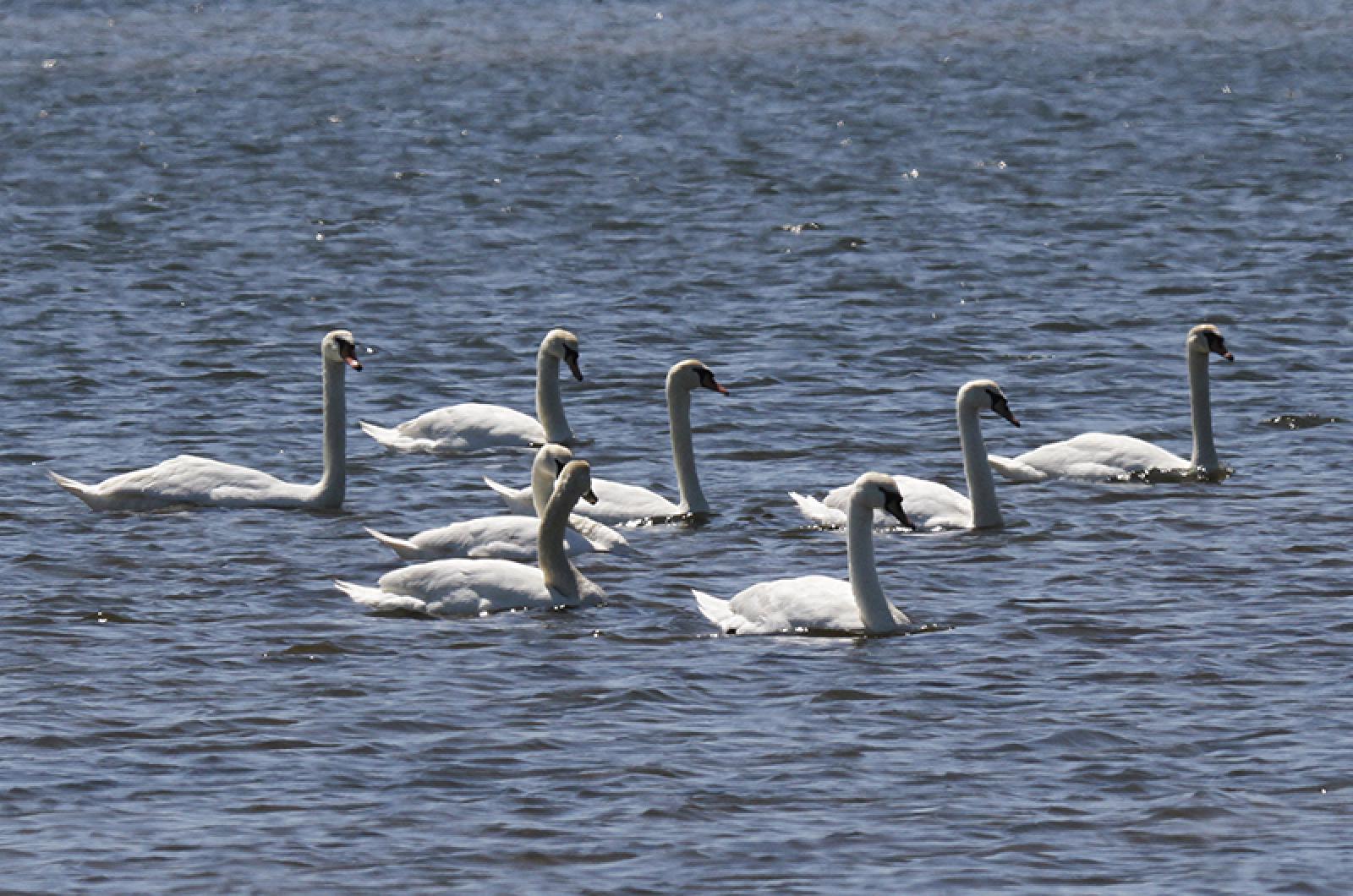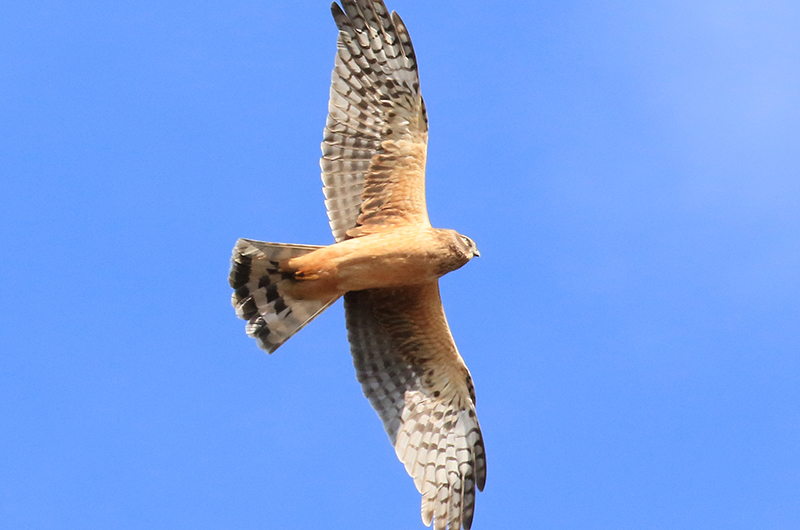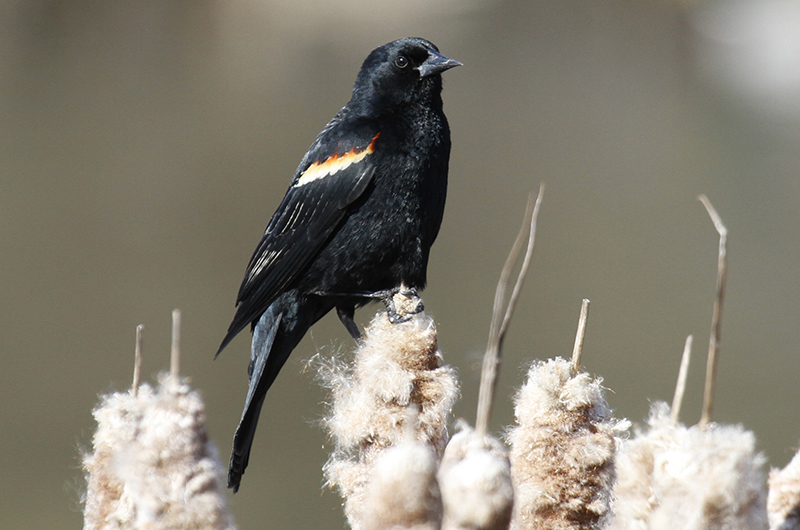We are all looking and listening for signs of the approaching spring, as some of us cannot wait for it to come even though we have not experienced much severe winter weather so far.
A potentially very early sign of spring would be the American oystercatcher photographed by Hans Goeckel on Feb. 15 on Norton Point Beach. There have been several oystercatchers lingering in the Boston Harbor area through the winter, so the best guess is that it is not an early migrant. They are due to return in mid-March. That same day, Mr. Goeckel also observed the great egret reported last week from Tom’s Neck. And as he was watching it, an adult bald eagle flew overhead and spooked all the birds that were there.
The best sign of spring in February is to hear birds singing in their nesting habitats.
Joe Jims heard a red-winged blackbird singing in the distance along the shores of Farm Pond on Feb. 16, and they are on the move throughout southern New England. There are numerous reports of red-wings at feeders. Luanne Johnson reports a male red-wing displaying on Feb. 12, the same day that Jill Bouck had two males and an early female visiting her feeders. And Connie Alexander saw one in Oak Bluffs on Feb. 14.
Grackles have also been seen in Oak Bluffs, as Matt Pelikan saw a flock of grackles near his Oak Bluffs house on Feb. 13, and more recently an anonymous birder spotted five grackles on nearby Norris avenue.
For several years now, we have had osprey reports in mid-February, well before they are due back from their southern haunts. The calls have only been heard on cloudy or foggy days, and the bird has not been seen. Gordon Healy reports hearing one on Feb. 13 in Katama, but he could not see it. Bald eagle vocalizations are very similar to those of an osprey, and bald eagles are here now while ospreys are not expected for another few weeks.
I have been hearing the following woodlands species singing in my yard: Carolina wren, tufted titmouse, black-capped chickadee, house finch, song sparrow and northern cardinal. I have also heard territorial calls from white-breasted nuthatch, downy woodpecker and northern flicker. Can spring be far behind?
Bird Sightings
We do not see murres very often, as they are more common further offshore. Robin Bray and David Nash spotted one close to shore while on a Trustees of Reservations hike at Squibnocket on Feb. 16. It is difficult to distinguish between the two species of murres (common and thick-billed), so it goes in the record books as a murre species. John Nelson spotted an unusually dark merlin as it flew across the road at the southern end of State Beach on Feb. 16. It may have been from the mid-west as those birds tend to be darker. That day, he and Jeff Bernier also spotted a flock of 35 yellow-rumped warblers at the south end of Katama Airpark, making it the largest flock reported to me in years.
On Feb. 16, the troika of Luanne Johnson, Margaret Curtin and Nancy Weaver spotted the northern shrike that has been at Lobsterville since late January. Neither Ned Rice nor I could find the shrike the next morning, although I spotted a lesser black-backed gull within a flock of 250 or so herring and great black–backed gulls on Edys Island at the southern end of Menemsha Channel. That same trio also spotted five harlequin ducks at Squibnocket on Feb. 16, and an adult bald eagle in Chilmark.
Two other species are lingering as of Feb. 16. On that day, Chappaquiddick’s snowy owl was seen again by Kevin Deren, and the American bittern at Crackatuxet Cove was spotted again by Jeff Bernier.
Allan Keith spotted 12 purple sandpipers at Menemsha on Feb. 16 and he finally got a good look at a clay-colored sparrow at his feeders on Feb. 15. He also reports 19 chipping sparrows in his yard on Feb. 14.
A large flock of greater scaup was observed in Edgartown Great Pond on Feb. 14 by both Hans Goeckel and Jeff Bernier.
Fern and Feather Preschool staff and students spotted a great blue heron on Feb. 11. Preschool director Ryan Ofsthun was the first to spot it.
Mute swans seem to congregate at the southern end of Sengekontacket Pond in the winter. Scotty Goldin counted 40 of them on Feb. 15.
Bob Woodruff is the latest to report a pine warbler visiting his feeders on Feb. 12. They seem to be relatively abundant this winter.
The first north-bound migrants will show up soon! Please report your sightings to birds@mvgazette.com.
Robert Culbert is an ecological consultant with Nature Watch LLC living in Vineyard Haven.










Comments
Comment policy »